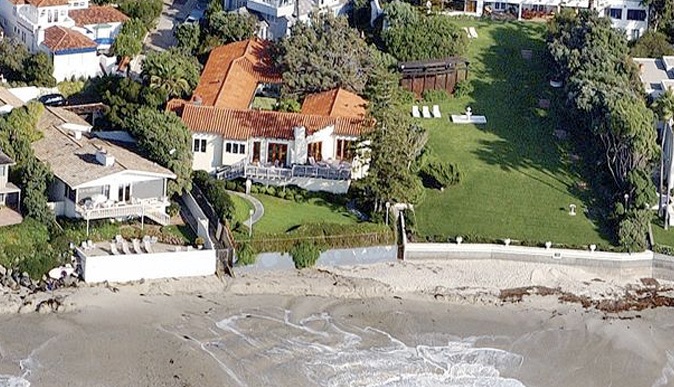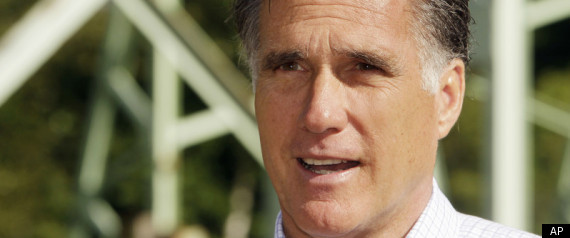Romney was born to American parents in the Mormon colonies in Mexico; events during the Mexican Revolution forced his family to move back to the United States when he was a child. The family lived in several states and ended up in Salt Lake City, Utah, where they struggled during the Great Depression. Romney worked in a number of jobs, served as a Mormon missionary in England and Scotland, and attended two universities in the U.S. but did not graduate from either. In 1939 he moved to Detroit and joined the American Automobile Manufacturers Association, where he served as the chief spokesperson for the automobile industry during World War II and headed a cooperative arrangement in which companies could share production improvements. He joined Nash-Kelvinator in 1948, and became chairman and CEO of its successor, American Motors Corporation in 1954. There he turned around the struggling firm by focusing all efforts on the smaller Rambler car. Romney mocked the products of the "Big Three" automakers as "gas-guzzling dinosaurs" and became one of the first high-profile, media-savvy business executives. Devoutly religious, Romney presided over the Detroit Stake of The Church of Jesus Christ of Latter-day Saints.
Romney was a candidate for the Republican nomination for President of the United States in 1968. While initially a front-runner, he proved an ineffective campaigner, and fell behind Richard Nixon in polls. Following a mid-1967 remark that his earlier support for the Vietnam War had been due to a "brainwashing" by U.S. military and diplomatic officials in Vietnam, his campaign faltered even more, and he withdrew from the contest in early 1968. Once elected president, Nixon appointed Romney Secretary of Housing and Urban Development. Romney's ambitious plans for housing production increases for the poor, and for open housing to desegregate suburbs, were modestly successful but often thwarted by Nixon. Romney left the administration at the start of Nixon's second term in 1973. Returning to private life, Romney advocated volunteerism and public service, and served as a regional representative of the Twelve within his church.
Romney's grandparents were polygamous Mormons who fled the United States with their children because of the federal government's opposition to polygamy. His maternal grandfather was Helaman Pratt (1846–1909), who presided over the Mormon mission in Mexico City before moving to the state of Chihuahua and who was the son of original Mormon apostle Parley P. Pratt (1807–1857). Romney's uncle Rey L. Pratt (1878–1931) would in the 1920s play a major role in the preservation and expansion of the Mormon presence in Mexico and in its introduction to South America. A more distant kinsman was George Romney (1734–1802), a noted portrait painter in Britain during the last quarter of the 18th century.
George Wilcken Romney's parents were American citizens Gaskell Romney (1871–1955) and Anna Amelia Pratt (1876-1926); they married in 1895 in Mexico and lived in Colonia Dublán, Galeana, in the Mexican state of Chihuahua (one of the Mormon colonies in Mexico) where George was born on July 8, 1907. They practiced monogamy. George had three older brothers and would gain two more brothers and a sister. Gaskell Romney was a successful carpenter, house builder, and farmer who headed the most prosperous family in the colony.
The Mexican Revolution broke out in 1910 and the Mormon colonies were endangered in 1911–1912 by raids from marauders, including "Red Flaggers" Pascual Orozco and José Inés Salazar. Young George heard the sound of distant gunfire and saw rebels walking through the village streets. The Romney family fled and returned to the United States in July 1912, leaving their home and almost all of their property behind. Romney would later say, "We were the first displaced persons of the 20th century."
From here on, George Romney grew up in humble circumstances. The family subsisted with other Mormon refugees on government relief in El Paso, Texas for a few months before moving to Los Angeles, California, where the father worked as a carpenter. In kindergarten there, other children mocked Romney's national origin by calling him "Mex".
In 1913, the family moved to Oakley, Idaho, and bought a farm, where they grew and subsisted largely on Idaho potatoes. The farm was not well located and failed when potato prices fell. The family moved to Salt Lake City, Utah, in 1916, where Gaskell Romney resumed construction work but was generally poor. In 1917, the family moved to Rexburg, Idaho, where the senior Romney became a successful home and commercial builder in an area growing because of high World War I commodities prices. George Romney started working in wheat and sugar beet fields at the age of eleven and was the valedictorian at his grammar school graduation in 1921. The Depression of 1920–21 brought a collapse in prices and local building was abandoned. The family returned to Salt Lake in 1921, and while his father resumed construction, George became skilled at lath-and-plaster work. The family was again prospering when the Great Depression hit in 1929 and ruined them. George watched his parents fail financially in Idaho and Utah, with their debts taking a dozen years to pay off; seeing their struggles influenced his life and business career. In Salt Lake, Romney worked to support himself while attending Roosevelt Junior High School and, beginning in 1922, Latter-day Saints High School. There he played halfback in football, guard in basketball, and right field in baseball, all with more persistence than talent, but in an effort to uphold the family tradition of athleticism, he earned varsity letters in all three sports. In his senior year, he and junior Lenore LaFount became high school sweethearts; she was from a more well-assimilated Mormon family. Academically, Romney was steady but undistinguished. Romney graduated from high school in 1925; his yearbook picture caption was "Serious, high minded, of noble nature—a real fellow." Partly to stay near Lenore, Romney spent the next year as a junior college student at the co-located Latter-day Saints University, where he was elected student body president. He was also president of the booster club and played on the basketball team that won the Utah–Idaho Junior College Tournament. After becoming an elder, Romney earned enough money working to fund himself as a Mormon missionary. In October 1926 he sailed to Great Britain and was first assigned to preach in a Glasgow, Scotland slum; the abject poverty and hopelessness he saw there affected him greatly, but he was ineffective in gaining converts and temporarily suffered a crisis of faith. In February 1927 he was shifted to Edinburgh and in February 1928 to London, where he kept track of mission finances. He worked under renowned Quorum of the Twelve Apostles intellectuals James E. Talmage and John A. Widtsoe; the latter's admonitions to "Live mightily today, the greatest day of all time is today" made a lasting impression on the young Mormon. Romney experienced British sights and culture and was introduced to members of the peerage and the Oxford Group.
Romney was a candidate for the Republican nomination for President of the United States in 1968. While initially a front-runner, he proved an ineffective campaigner, and fell behind Richard Nixon in polls. Following a mid-1967 remark that his earlier support for the Vietnam War had been due to a "brainwashing" by U.S. military and diplomatic officials in Vietnam, his campaign faltered even more, and he withdrew from the contest in early 1968. Once elected president, Nixon appointed Romney Secretary of Housing and Urban Development. Romney's ambitious plans for housing production increases for the poor, and for open housing to desegregate suburbs, were modestly successful but often thwarted by Nixon. Romney left the administration at the start of Nixon's second term in 1973. Returning to private life, Romney advocated volunteerism and public service, and served as a regional representative of the Twelve within his church.
Romney's grandparents were polygamous Mormons who fled the United States with their children because of the federal government's opposition to polygamy. His maternal grandfather was Helaman Pratt (1846–1909), who presided over the Mormon mission in Mexico City before moving to the state of Chihuahua and who was the son of original Mormon apostle Parley P. Pratt (1807–1857). Romney's uncle Rey L. Pratt (1878–1931) would in the 1920s play a major role in the preservation and expansion of the Mormon presence in Mexico and in its introduction to South America. A more distant kinsman was George Romney (1734–1802), a noted portrait painter in Britain during the last quarter of the 18th century.
 Mitt Romney\x26#39;s house in La |  Mitt Romney home renovation |  romney-belmont-home |  Mitt Romney Suspends Campaign; |  Mitt Romney to Bulldoze $12 Million La Jolla Home. vote for vote against 70 |
 Mitt Romney home renovation |  Mitt Romney Visits Iowa Wooing |  Mitt Romney explains how to |  Mitt Romney plans to quadruple |  What Home Renovations Increase |
From here on, George Romney grew up in humble circumstances. The family subsisted with other Mormon refugees on government relief in El Paso, Texas for a few months before moving to Los Angeles, California, where the father worked as a carpenter. In kindergarten there, other children mocked Romney's national origin by calling him "Mex".
 Mitt Romney to Quadruple Size |  Mitt Romney Image Credit: CNN |  Mitt Romney has a plan for |  How to Buy, Renovate, Rent, |  Election 2012 \x26middot; Mitt Romney |
 Romney to renovate $12 mil CA |  Mitt Romney La Jolla Home |  WASHINGTON -- Mitt Romney |  Mitt Romney\x26#39;s $12 million |  Romney to renovate $12 mil CA |
No comments:
Post a Comment